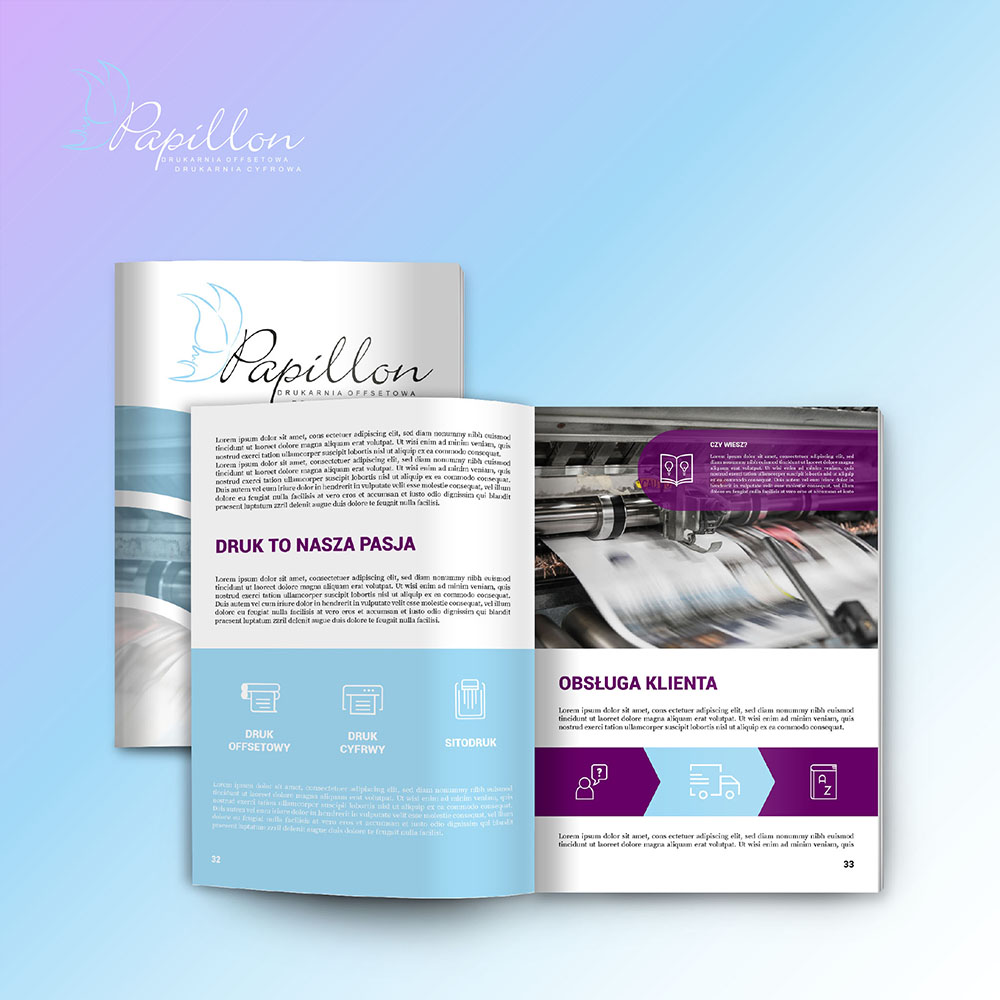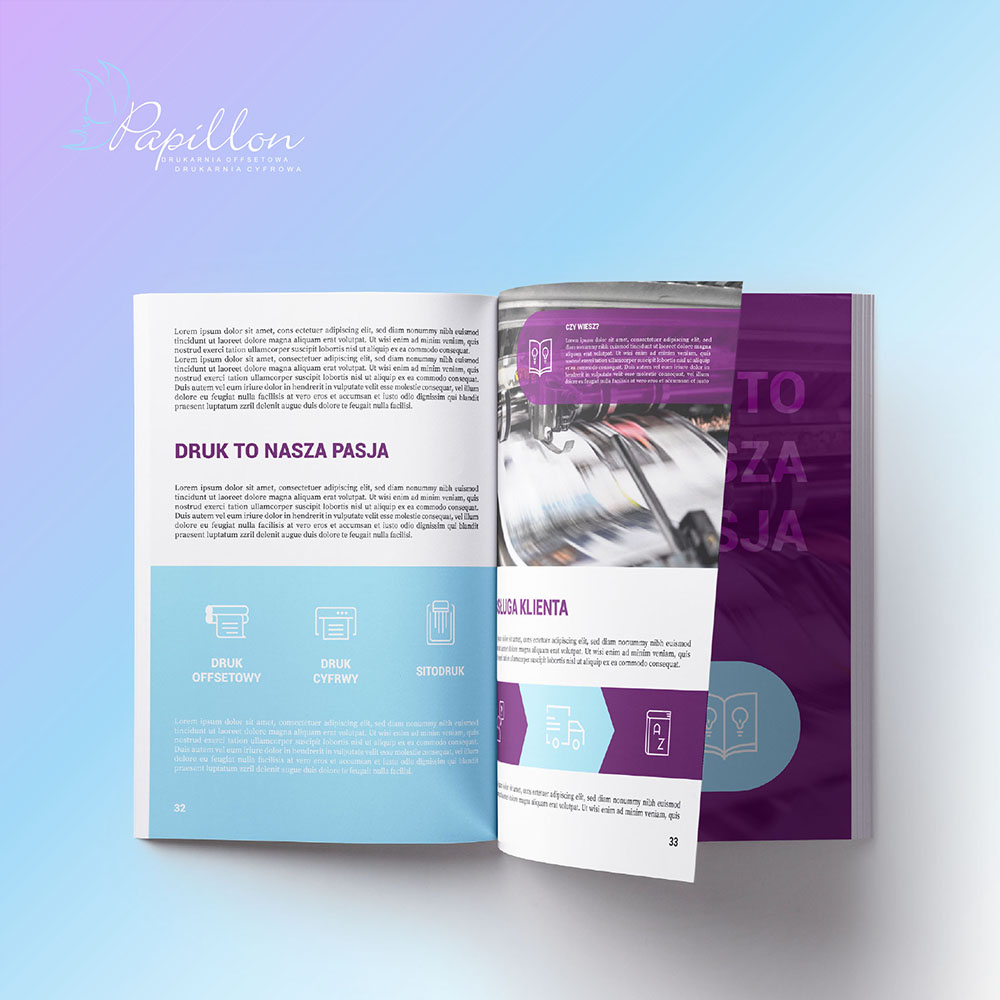What types of binding can be used to join pages in products such as catalogues, books or brochures?
Saddle stitch binding: also called stapled binding. This binding type is used most often in brochures with less than 80 pages. It is a popular form of binding also for cost-related reasons, as it tends to be the cheapest form of binding.
Saddle stitch binding uses flat or loop staples. Loop staples make it possible to clip a brochure into a binder.
Soft binding – glued: the most popular form of joining pages in catalogues and books. The most commonly used adhesive for this type of binding is Hot Melt. Glued binding is recommended for products with less than one hundred pages. This form of binding may come with one or two cover leaves. PUR is a stronger type of adhesive used for binding volumes with more than one hundred pages.
Soft binding – sewn and glued: this is an enhanced version of soft binding, with the difference that the printed product is additionally reinforced with bookbinding thread. This type of binding is used for publications that are heavily used.
hardcover: also referred to as hardback. As the name suggests, this is a very robust and durable form of binding. This method uses solid cardboard with a thickness between 1 mm and 3 mm. Of course, the solid cardboard is not printed on, just the lining used for lamination. The print is applied on chalk paper (130–150 g), which is then laminated onto the solid cardboard. The sewn printed volume is then glued into the cover. It is covered with unprinted and uncoated offset paper to prevent solid cardboard from being visible on the inside of the cover.
Spiral binding: a popular form of binding for multi-panel calendars. Also used for catalogues or brochures, but on a more limited scale. The pages of the book are joined by a metal spiral. Spirals come in many colours, such as silver, black, red, green, blue and many other. Spiral binding makes for convenient browsing, but this binding solution is more costly.





